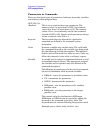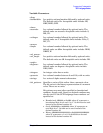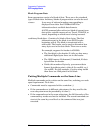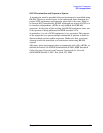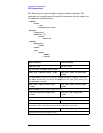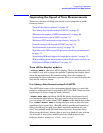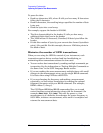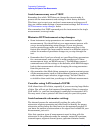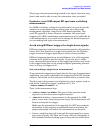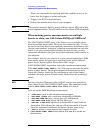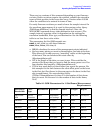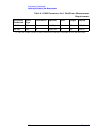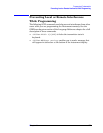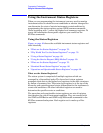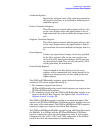
70 Chapter 2
Programming Fundamentals
Improving the Speed of Your Measurements
Avoid unnecessary use of *RST.
Remember that while *RST does not change the current mode, it
presets all the measurements and settings to their factory defaults.
This forces you to reset your analyzer’s measurement settings even if
they use similar mode settings or measurement settings. See Minimize
DUT/instrument setup changes. below.
Also remember that *RST command puts the instrument in the single
measurement (or sweep) mode.
Minimize DUT/instrument setup changes.
• Some instrument setup parameters are common to multiple
measurements. You should look at your measurement process with
an eye toward minimizing setup changes. If your test process
involves nested loops, make sure that the inner-most loop is the
fastest.Also check if the loops could be nested in a different order to
reduce the number of parameter changes as you step through the
test.
• Remember that if you have already set your Meas Setup parameters
for a measurement, and you want to make another one of these
measurements later, use READ:<meas>?. The MEASure:<meas>?.
command resets all the settings to the defaults, while READ changes
back to that measurement without changing the setup parameters
from the previous use.
• Also remember that Mode Setup parameters remain constant across
all the measurements (such as: center/channel frequency, amplitude,
radio standard, input selection, trigger setup). You don’t have to
re-initialize them each time you change to a different measurement.
Consider using LAN instead of GPIB.
LAN allows faster I/O of data, especially if you are moving large blocks
of data. You will not get this improved throughput if there is excessive
LAN traffic (i.e. your test instrument is connected to enterprise LAN).
You may want to use a private LAN that is only for your test system.
Avoid automatic attenuator setting.
The internal process for automatically setting the value of the
attenuator requires measuring an initial burst to identify the proper
attenuator setting before the next burst can be measured properly. If
you know the amount of attenuation or the signal level needed for your
measurement, just set it.
Note that spurious types of measurements must be done with the
attenuator in the automatic mode (for example, output RF spectrum,
transmit spurs, adjacent channel power, spectrum emission mask).



